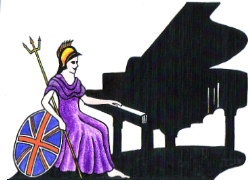Learn to Play the Piano Make Music
Piano Lessons and Music Theory Teacher Lichfield Sarah Lloyd Music

UK Piano Page


Tutoring Experience:
I have taught privately for over 10 years - I have built strong and trusting relationships with all my pupils and I have a 92% merit and distinction rate with ABRSM exams.
My teaching is from home, where I can provide a quality piano (either for learning on or for accompanying a string pupil).
Tutoring Approach:
When we first meet, I like to discover what goals you are aiming for...if you are an adult looking to start a new skill for simple enjoyment, be it to achieve Grade 1 or to be able to play the Christmas Carol you've always loved, or if you would like your child to develop more confidence in the instrument to be able to take ABRSM grades. Whatever your intention, I will work with you to achieve these goals at the speed you are most comfortable. I will actively encourage questions - my desire is for you to understand what you are learning without feeling overwhelmed!
Disclosure and Barring Service: yes
Qualification: Attended RNCM
Hours
Disclosure and Barring Service: yes
Qualification: Attended RNCM
Hampstead, London
England
Experienced piano teacher and accompanist
Great Harwood, Lancashire
England
I teach piano & violin from my own home in Great
Music Festival for performers and guests Our 10th
18-06-2022 12:30PM
The Morecambe Bay Piano Group was set up to extend
11-12-2021 01:00PM
The Morecambe Bay Piano Group was set up to extend
08-01-2022 01:00PM
The Morecambe Bay Piano Group was set up to extend
12-02-2022 01:00PM